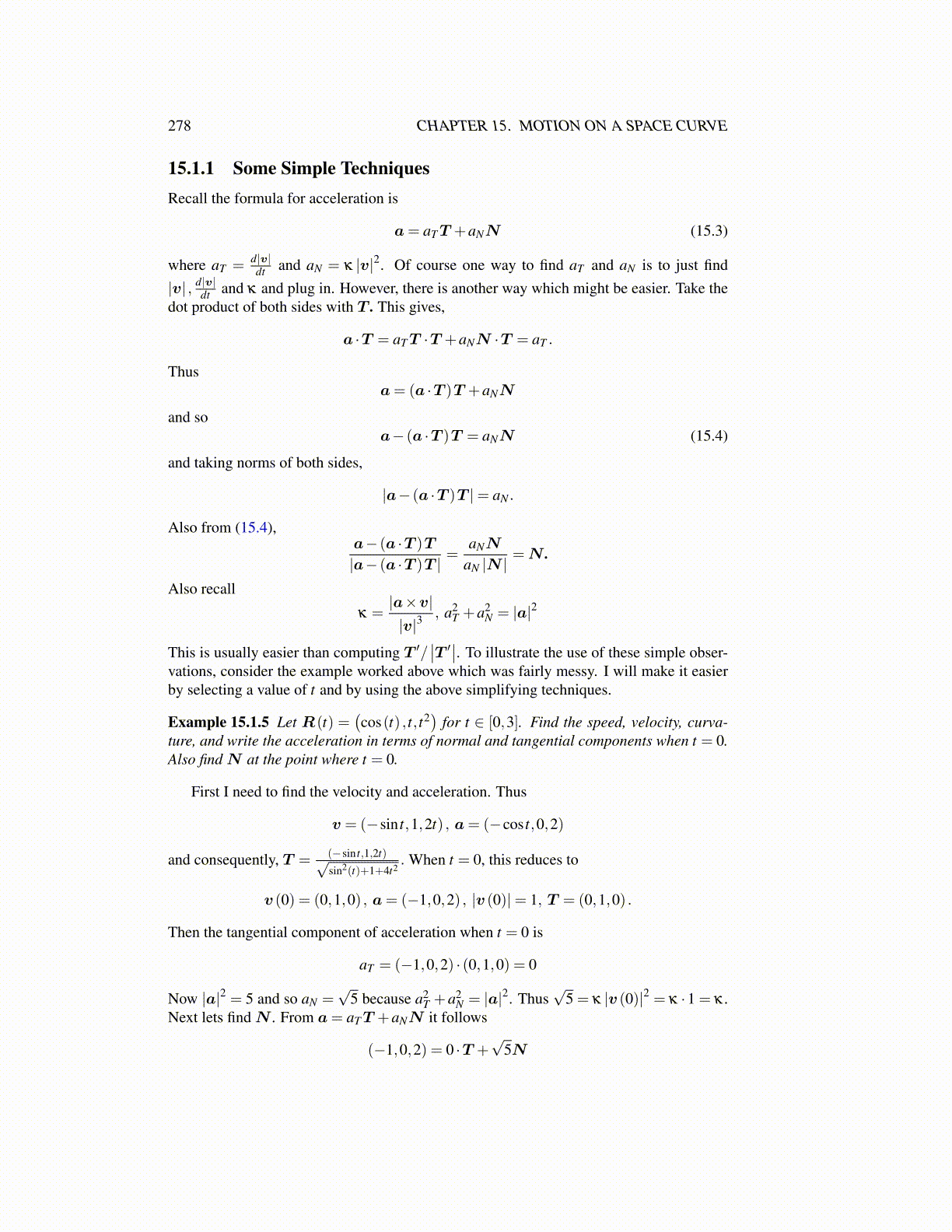
278 CHAPTER 15. MOTION ON A SPACE CURVE
15.1.1 Some Simple TechniquesRecall the formula for acceleration is
a= aTT +aNN (15.3)
where aT = d|v|dt and aN = κ |v|2. Of course one way to find aT and aN is to just find
|v| , d|v|dt and κ and plug in. However, there is another way which might be easier. Take the
dot product of both sides with T. This gives,
a ·T = aTT ·T +aNN ·T = aT .
Thusa= (a ·T )T +aNN
and soa− (a ·T )T = aNN (15.4)
and taking norms of both sides,
|a− (a ·T )T |= aN .
Also from (15.4),a− (a ·T )T
|a− (a ·T )T |=
aNN
aN |N |=N.
Also recall
κ =|a×v||v|3
, a2T +a2
N = |a|2
This is usually easier than computing T ′/∣∣T ′∣∣. To illustrate the use of these simple obser-
vations, consider the example worked above which was fairly messy. I will make it easierby selecting a value of t and by using the above simplifying techniques.
Example 15.1.5 Let R(t) =(cos(t) , t, t2
)for t ∈ [0,3]. Find the speed, velocity, curva-
ture, and write the acceleration in terms of normal and tangential components when t = 0.Also find N at the point where t = 0.
First I need to find the velocity and acceleration. Thus
v = (−sin t,1,2t) , a= (−cos t,0,2)
and consequently, T = (−sin t,1,2t)√sin2(t)+1+4t2
. When t = 0, this reduces to
v (0) = (0,1,0) , a= (−1,0,2) , |v (0)|= 1, T = (0,1,0) .
Then the tangential component of acceleration when t = 0 is
aT = (−1,0,2) · (0,1,0) = 0
Now |a|2 = 5 and so aN =√
5 because a2T +a2
N = |a|2. Thus√
5 = κ |v (0)|2 = κ ·1 = κ .Next lets find N . From a= aTT +aNN it follows
(−1,0,2) = 0 ·T +√
5N